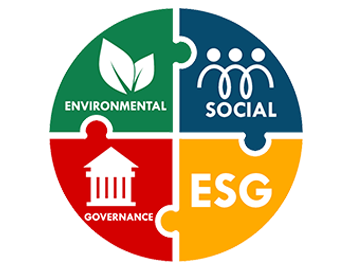 ESG - Environmental, Social and Governance
ESG - Environmental, Social and Governance
Campus Building Footprint
AASTMT Campus Building and CO₂ Footprint Report
Total Built-Up Area: 41,695 m²
Total Campus Perimeter Distance: Approx. 1.58 km
|
Building |
Total Area (m²) |
Floors |
Total Built-Up Area (m²) |
|
Building 1 |
1150 |
5 |
5750 |
|
Building 2 |
1150 |
5 |
5750 |
|
Building 3 |
1150 |
5 |
5750 |
|
Building 4 |
1150 |
5 |
5750 |
|
Building 5 |
1150 |
5 |
5750 |
|
Building 6 |
1150 |
5 |
5750 |
|
Building 7 |
1200 |
6 |
7200 |
|
Building 8 |
800 |
2 |
1600 |
|
Building 9 |
1000 |
5 |
5000 |
|
Building 10 |
550 |
5 |
2750 |
|
Building 11 |
850 |
4 |
3400 |
|
Building 12 |
640 |
6 |
3840 |
|
Building 13 |
1250 |
4 |
5000 |
|
Building 14 |
200 |
2 |
400 |
|
Building 15 |
1065 |
4 |
4260 |
|
Building 16 |
830 |
6 |
4980 |
|
Building 17 |
700 |
3 |
2100 |
|
Building 18 |
1300 |
2 |
2600 |
|
Building 19 |
660 |
3 |
1980 |
|
Building 20 |
135 |
1 |
135 |
|
Building 21 |
800 |
1 |
800 |
|
Building 22 |
570 |
1 |
570 |
|
Building 23 |
150 |
1 |
150 |
|
Building 24 |
925 |
4 |
3700 |
|
Building 25 |
580 |
1 |
580 |
|
Total |
85545 |
||
AASTMT CO₂ Footprint
Introduction
This report presents the calculation and analysis of the carbon footprint of the Arab Academy for Science, Technology and Maritime Transport (AASTMT). It aims to understand the university’s environmental impact and provide a foundation for actionable emissions reduction strategies.
Scope of the Report
The carbon footprint assessment includes direct and indirect greenhouse gas (GHG) emissions generated from campus operations for the years 2022 and 2023.
Methodology
AASTMT’s carbon footprint was calculated following the Greenhouse Gas Protocol (GHG Protocol) by WRI and WBCSD. Emissions are grouped into:
- Scope 1: Direct emissions from campus vehicles and refrigerant leaks.
- Scope 2: Indirect emissions from purchased electricity.
- Scope 3: Other indirect emissions from waste, water usage, and paper consumption.
Emissions Overview (kg CO₂-e)
|
Scope |
Emissions Source |
2022 |
2023 |
|
Scope 1 |
Fuel & Refrigerants |
1300000 |
1150000 |
|
Scope 2 |
Electricity consumption |
950000 |
925000 |
|
Scope 3 |
Waste, water, and paper consumption |
110000000 |
105000000 |
|
Totals |
Total Scope 1 |
1300000 |
1150000 |
|
Totals |
Total Scope 2 |
950000 |
925000 |
|
Totals |
Total Scope 3 |
110000000 |
105000000 |
|
Totals |
Total net emissions |
112250000 |
107075000 |
|
Others |
Population |
11000 |
11500 |
|
Others |
Net emissions per population (kg CO₂-e) |
10204.55 |
9308.26 |
Analysis Results
The largest contributor to AASTMT’s emissions is Scope 3, with over 100 million kg CO₂-e each year, primarily from waste and paper use. Significant improvements were observed from 2022 to 2023 across all categories.
Reduction Actions
- Expanding solar power capacity (currently 215 kW, 24% of campus energy in 2023)
- Increasing energy efficiency via LED lighting and smart building systems
- Transitioning fully to electric vehicles on campus
- Enhancing waste management, including recycling and composting initiatives
- Promoting sustainability education and student engagement
Conclusions
This report reflects AASTMT’s progress toward its goal of 30% emissions reduction by 2025 and 50% by 2040. By integrating infrastructure upgrades, smart technologies, and sustainable operations, AASTMT demonstrates strong leadership in climate action in the higher education sector.
Published: 30 April 2024
Contact: Prof. Dr. Kareem Tonbol – Dean of Scientific Research for Maritime Affairs
Email: ktonbol@aast.edu


